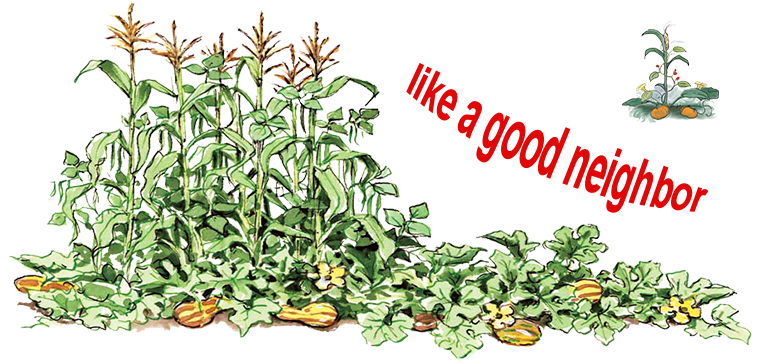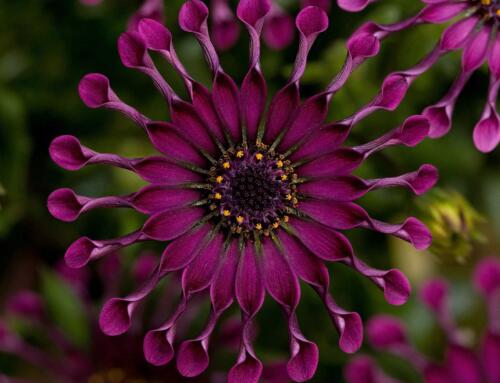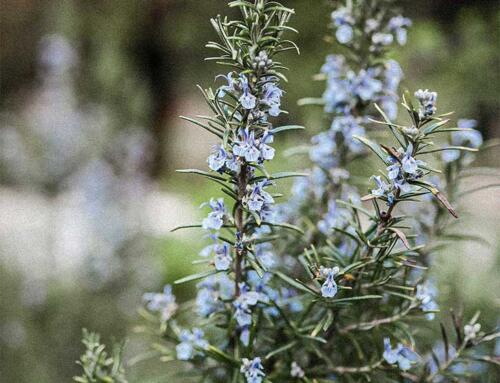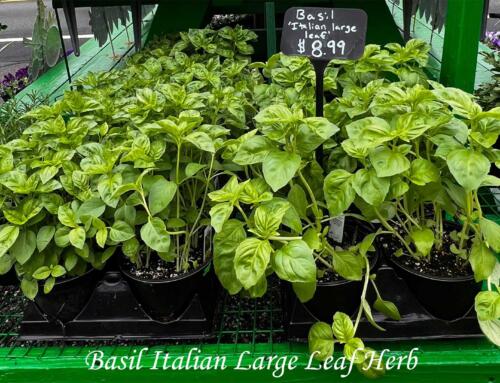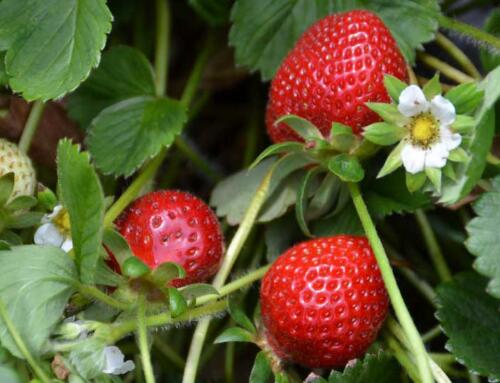Companion Plants
“I love spring anywhere, but if I could choose I would always greet it in a garden.”
like a good neighbor
companion plants share
Plant Combinations You Should Grow Side-by-Side
Try to think of your garden beds as your neighborhood. Just as in the area you live in, good neighbors make for a pleasant atmosphere to live within. One helps the other, this one can do that and that one can do this; and we all prosper. Well, plants are the same way…
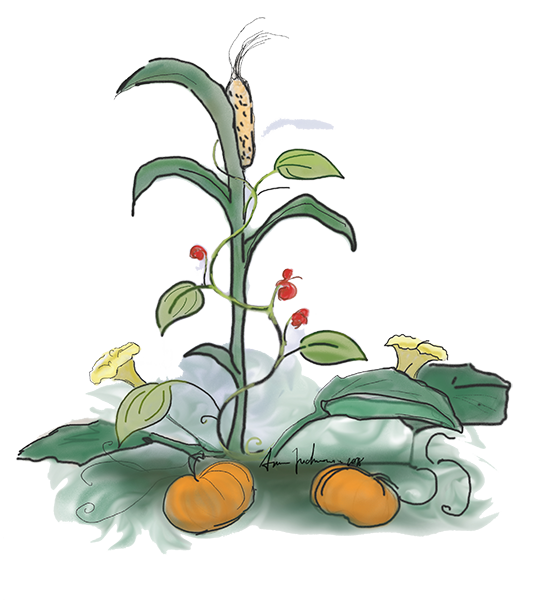 I can recall as a child planting a garden with my grandmother. She would lay out her plants and say “oh, these go over there with the garlic, or set these with the corn.” I would do so and then say “hows come granny”. She’d just so “oh that’s the way we always did it, they grow better.” It’s part folklore, part science, but companion planting just may help your garden grow.
I can recall as a child planting a garden with my grandmother. She would lay out her plants and say “oh, these go over there with the garlic, or set these with the corn.” I would do so and then say “hows come granny”. She’d just so “oh that’s the way we always did it, they grow better.” It’s part folklore, part science, but companion planting just may help your garden grow.
Go back in time for a moment or two and hear some garden folklore passed down generation to generation between your grandparents as they were preparing to plant their vegetable gardens for the year. It’s a concept built upon the idea that certain plants growing together provide mutual benefit to one another, resulting in greater crop yield and overall plant health. Therefore they are often referred to as “companion plantings”.
“The theory behind companion planting is that certain plants may help each other take up nutrients, improve pest management or attract pollinators. Some research, such as how to attract beneficial insects like lacewings to the garden to fight pests, has been studied, so we know it’s effective. We’re still researching other aspects of companion planting.”
So when you are preparing to plant this year, consider these following “good neighbor” companion plantings; it certainly won’t hurt to try these common-sense combinations in your garden:
Suggested Pairings for Companion Plantings
Nasturtiums and Cucumbers
 Companion planting is about bringing pollinators and beneficial insects to your garden to improve biodiversity. Grow cucumbers up a trellis, and lets the nasturtiums, which have a unique scent that seems to repel pests, grow in a colorful tumble underneath. Nasturtiums are good neighbors to so many vegetables, repelling a host of troublesome bugs and pests; they belong in every single part of your garden, but are especially useful near your cukes. Some say that nasturtiums even improve the flavor of cucumbers; we can’t promise this, but the beautiful, edible flowers of the nasturtium will decorate all your cucumber salads and garnish your plates for months on end!
Companion planting is about bringing pollinators and beneficial insects to your garden to improve biodiversity. Grow cucumbers up a trellis, and lets the nasturtiums, which have a unique scent that seems to repel pests, grow in a colorful tumble underneath. Nasturtiums are good neighbors to so many vegetables, repelling a host of troublesome bugs and pests; they belong in every single part of your garden, but are especially useful near your cukes. Some say that nasturtiums even improve the flavor of cucumbers; we can’t promise this, but the beautiful, edible flowers of the nasturtium will decorate all your cucumber salads and garnish your plates for months on end!
Melons or Squash and Flowering Herbs
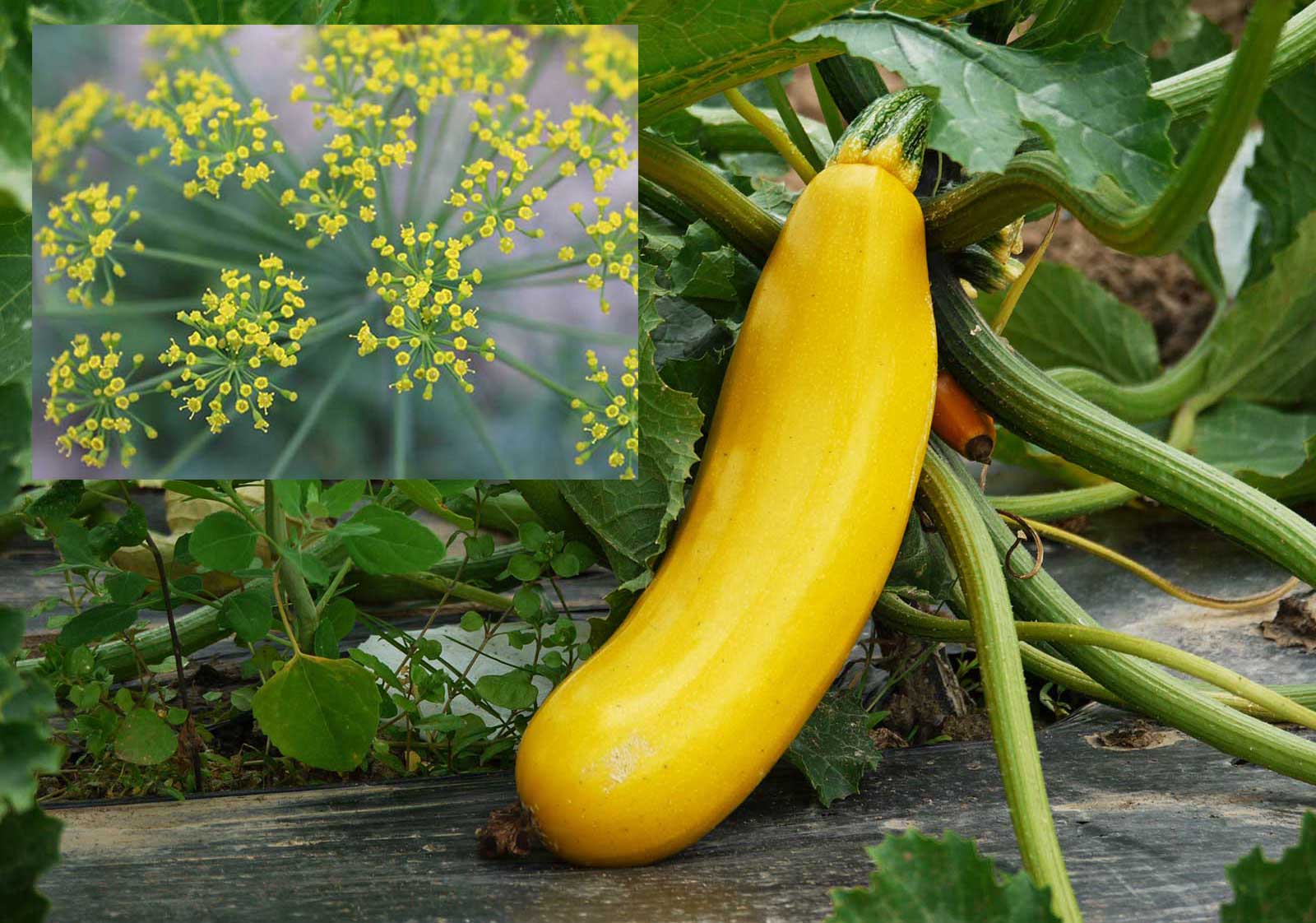 These are all vegetables that require pollinators to produce, so invite insect visitors into your garden by planting flowering herbs such as dill, fennel and parsley near melons and squash. You won’t get any yield if you don’t have pollination for these veggies. Herbs, like peppermint, dill, oregano, lemon balm, and parsley ward off pests and insects from delectable squashes.
These are all vegetables that require pollinators to produce, so invite insect visitors into your garden by planting flowering herbs such as dill, fennel and parsley near melons and squash. You won’t get any yield if you don’t have pollination for these veggies. Herbs, like peppermint, dill, oregano, lemon balm, and parsley ward off pests and insects from delectable squashes.
Herbs like Borage attract honeybees—crucial pollinators for any garden—and will increase the yield of your harvest. Borage, also known as starflower, bee bush, bee bread, and bugloss, is a medicinal herb with edible leaves and flowers
Sweet Alyssum and Swiss Chard
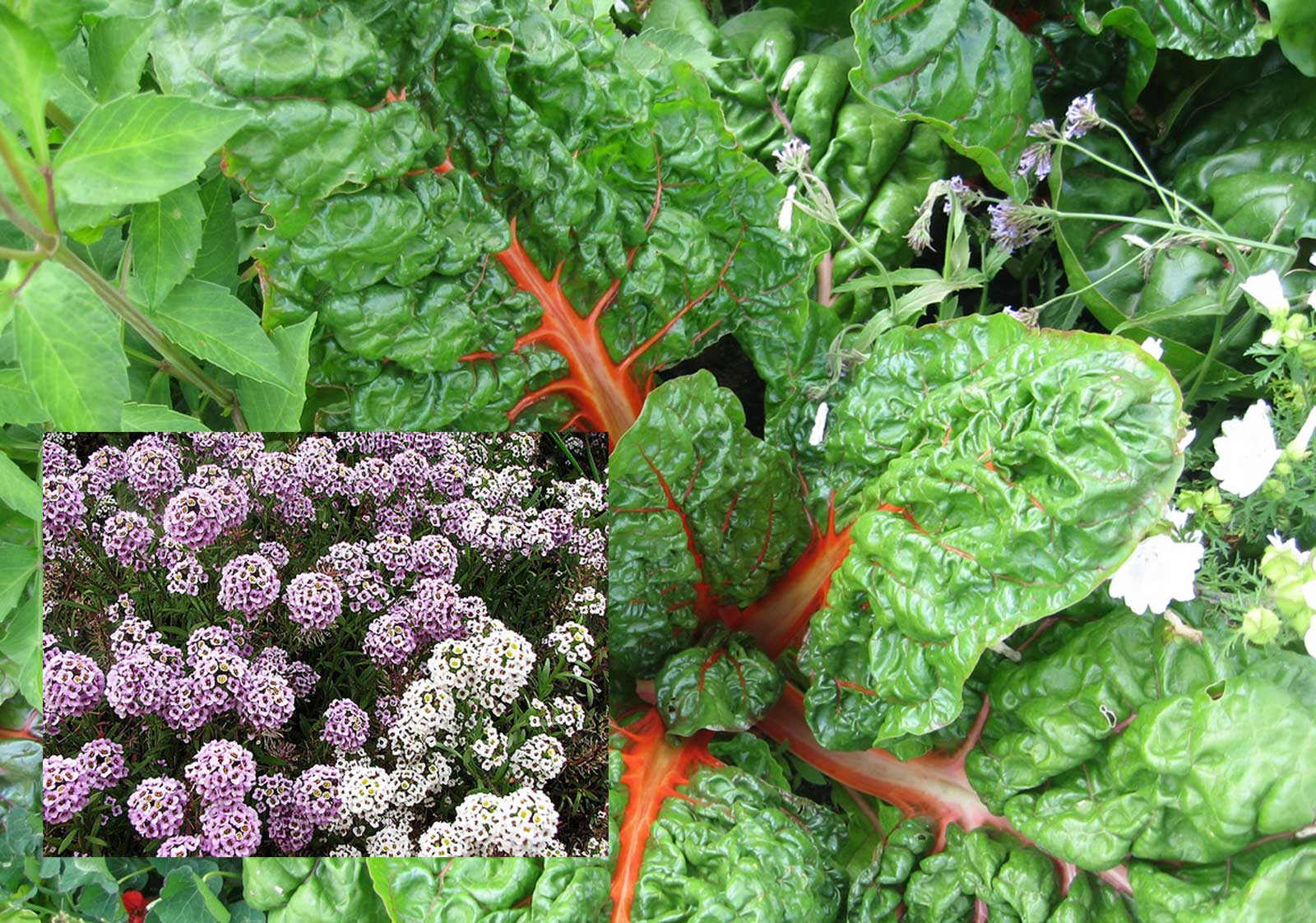 Swiss chard and sweet alyssum make a beautiful combination in the edible landscape. But this combination goes beyond “pretty”. Sweet alyssum is a workhorse, helping to grow a more productive landscape with less work.
Swiss chard and sweet alyssum make a beautiful combination in the edible landscape. But this combination goes beyond “pretty”. Sweet alyssum is a workhorse, helping to grow a more productive landscape with less work.
Alyssum is an annual that’s easy to grow from seed in between rows of vegetables. It’s a big attractor of hover flies, which are beneficial insects that control aphids. Plant pretty Swiss chard as a border, interspersed with these delicate low-growing flowers.
Swiss chard produces large leaves with bright, colorful stalks. It remains visually stunning all season long because it is heat- and drought-tolerant, and attracts few pests.
Corn, Pole Beans and Squash or Pumpkins
According to Iroquois legend, corn, beans, and squash are three inseparable sisters who only grow and thrive together. This tradition of interplanting corn, beans and squash in the same mounds, widespread among Native American farming societies, is a sophisticated, sustainable system that provided long-term soil fertility and a healthy diet to generations.

Growing a Three Sisters garden is a wonderful way to feel more connected to the history of this land, regardless of our ancestry.
The Iroquois believe corn, beans and squash are precious gifts from the Great Spirit, each watched over by one of three sisters spirits, called the De-o-ha-ko, or Our Sustainers.” The planting season is marked by ceremonies to honor them, and a festival commemorates the first harvest of green corn on the cob. By retelling the stories and performing annual rituals, Native Americans passed down the knowledge of growing, using and preserving the Three Sisters through generations.
Corn provides a natural pole for bean vines to climb. Beans fix nitrogen on their roots, improving the overall fertility of the plot by providing nitrogen to the following years corn. Bean vines also help stabilize the corn plants, making them less vulnerable to blowing over in the wind. Shallow-rooted squash vines become a living mulch, shading emerging weeds and preventing soil moisture from evaporating, thereby improving the overall crops chances of survival in dry years.
Calendula and Broccoli
 Calendula officinalis—also called pot marigold can benefit soil, repel pests, and aid healing. These flowers exude a sticky substance on their stems that attract aphids and traps them there. Planting calendula it next to and along with broccoli keeps the aphids off the broccoli. Plus, it brings in beneficial ladybugs to dine on the aphids.
Calendula officinalis—also called pot marigold can benefit soil, repel pests, and aid healing. These flowers exude a sticky substance on their stems that attract aphids and traps them there. Planting calendula it next to and along with broccoli keeps the aphids off the broccoli. Plus, it brings in beneficial ladybugs to dine on the aphids.
And since it has thick, fibrous roots and grows in thick patches, it can be used as a cover crop or as a living mulch to protect the soil. Calendula will grow thickly and die back on its own, enriching the soil with biomass.
Radishes, Carrots, and Tomatoes
Carrots and radishes can be planted at the same time. The radish seeds will germinate ahead of the carrots seeds, loosening the soil for germinating carrots. The carrots will still be young when the radishes are ready for harvesting. 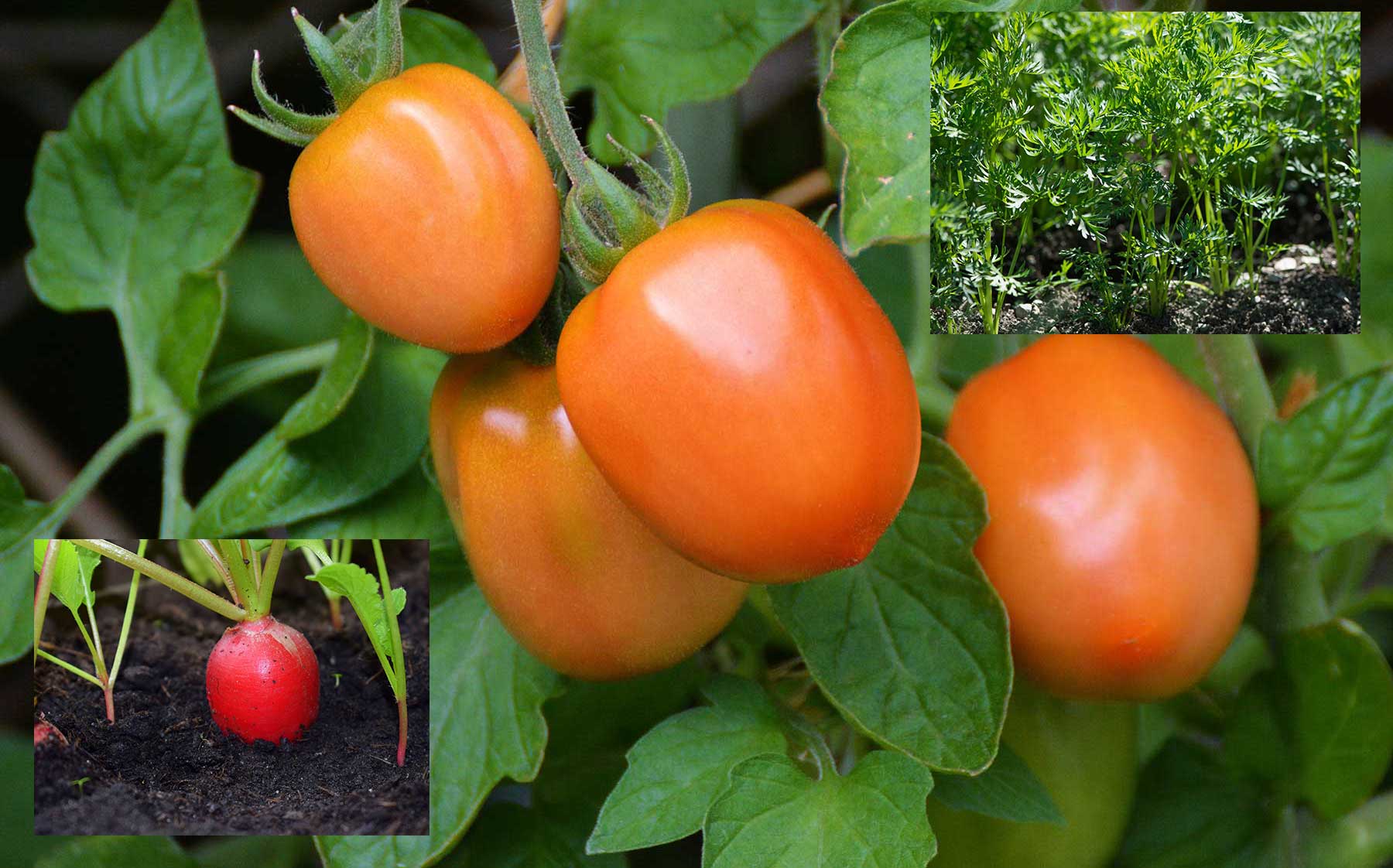 When the radishes are harvested, there will be more room for carrots to grow.
When the radishes are harvested, there will be more room for carrots to grow.
These two plants take up nutrients from different places in the soil so they aren’t competing for resources. Radishes mature quickly and don’t grow as deeply as carrots, which have a long tap root and take more days to mature. Tomatoes provide shade for the heat-sensitive carrots.
Tomatoes also secrete a natural insect deterrent called solanine which kills insects that could otherwise harm carrots. They can enhance the flavor of carrots, too. Carrots, on the other hand, break up the soil so that more air and water can go to the tomato plants’ roots.
There’s one thing to keep in mind if you plan to grow carrots and tomatoes together. Tomatoes can stunt the growth of carrots so make sure that you plant them at least 15 inches apart from each other.

